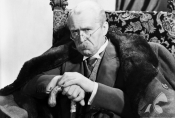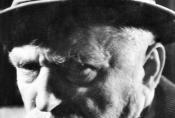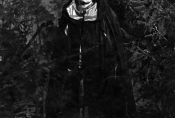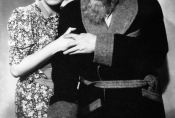Kazimierz Junosza-Stępowski
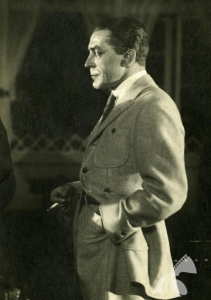
Born on November 26 or 28, 1880 (some sources say December 8, 1882, which is probably the date of his baptism) in Venice. Theatre actor associated with cinema since the beginning of its existence on Polish soil. He starred in experimental films by Kazimierz Prószyński, such as Powrót birbanta [The return of the rake] and Przygoda dorożkarza [A Cabman’s Adventure]. He played more than twenty roles in the silent cinema period, cast by the best directors and a most influential producer, Aleksander Hertz. However, he did not neglect his theatrical career, appearing on stages in Warsaw and touring with several theatres.
He had an extraordinary understanding of the camera and an awareness of the film medium. A real master of subtle facial expressions, he avoided unnecessary gestures, becoming the most prominent actor in the inter-war period. His style was compared to Emil Jannings’s performance in The Last Laugh by Friedrich Wilhelm Murnau. He considered film acting to be an entirely different profession than theatre, so his film performances lack theatrical mannerisms and remain interesting, not only from a historical point of view.
He played very different roles: fathers, lovers, robbers, nobles, officials, doctors – both leading and supporting, or even cameos. He gave his characters confidence, depth and sometimes even humour, for example in Młody las/Young forest by Józef Lejtes. With the advent of sound in cinema, he could finally use his greatest advantage – his voice: deep, resonant but calm. Characters played by Junosza-Stępowski therefore took on an extra dimension. Even when playing a supporting role, he attracted the attention of viewers, and often overshadowed the lead.
Of his almost sixty film roles, the most significant are those in films by talented directors: Józef Lejtes and Michał Waszyński. The latter was based on the novel about Professor Wilczur by Tadeusz Dołęga-Mostowicz. Junosza-Stepowski masterfully played the main role, constructing a complex character and subtly communicating his wisdom and reasons. He is economical in his acting, which perfectly serves to convey Wilczur’s conviction about the importance of human life and his reluctance to tolerate meanness and selfishness. The actor made the story of his tragic hero much more profound, going beyond the cruel randomness of his fate.
Despite his position as a film star, Junosza-Stepowski was rather aloof and avoided socialising with the film circle. An exceptionally hardworking man, he was also considered a gentleman and an expert in art.
He died on July 5, 1943 in Warsaw, shot by soldiers of the Polish Underground, who were trying to carry out a sentence of the Polish Underground Court on his wife, the actress Jaga Juno. He shielded her with his own body. The woman was actually a Gestapo informant and died a few months later at the hands of Poles.
Artur Majer
Selected filmography
-
1934
YOUNG FOREST
reż. Józef Lejtes
-
1937
THE GIRLS OF NOWOLIPKI
reż. Józef Lejtes
-
1937
THE QUACK
reż. Michał Waszyński

